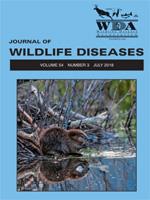Host responses to infection with novel pathogens are costly and require trade-offs among physiologic systems. One such pathogen is the fungus Pseudogymnoascus destructans (Pd) that causes white-nose syndrome (WNS) and has led to mass mortality of hibernating bats in eastern North America. Although infection with Pd does not always result in death, we hypothesized that bats that survive infection suffer significant consequences that negatively impact the ability of females to reproduce. To understand the physiologic consequences of surviving infection with Pd, we assessed differences in wing damage, mass-specific resting metabolic rate, and reproductive rate between little brown myotis (Myotis lucifugus) that survived a winter in captivity after inoculation with Pd (WNS survivors) and comparable, uninfected bats. Survivors of WNS had significantly more damaged wing tissue and displayed elevated mass-specific metabolic rates compared with Pd-uninfected bats after emergence from hibernation. The WNS survivors and Pd-uninfected bats did not significantly differ in their reproductive capacity, at least in captivity. However, our metabolic data demonstrated greater energetic costs during spring in WNS survivors compared with uninfected bats, which may have led to other consequences for postpartum fitness. We suggest that, after surviving the energetic constraints of winter, temperate hibernating bats infected with Pd faced a second energetic bottleneck after emerging from hibernation.
How to translate text using browser tools
4 April 2018
BATS RECOVERING FROM WHITE-NOSE SYNDROME ELEVATE METABOLIC RATE DURING WING HEALING IN SPRING
Melissa B. Meierhofer,
Joseph S. Johnson,
Kenneth A, Field,
Shayne S. Lumadue,
Allen Kurta,
Joseph A. Kath,
DeeAnn M. Reeder
ACCESS THE FULL ARTICLE

Journal of Wildlife Diseases
Vol. 54 • No. 3
July 2018
Vol. 54 • No. 3
July 2018
Chiroptera
energy balance
fitness
Little Brown Myotis
metabolic rate
reproduction
white-nose syndrome




